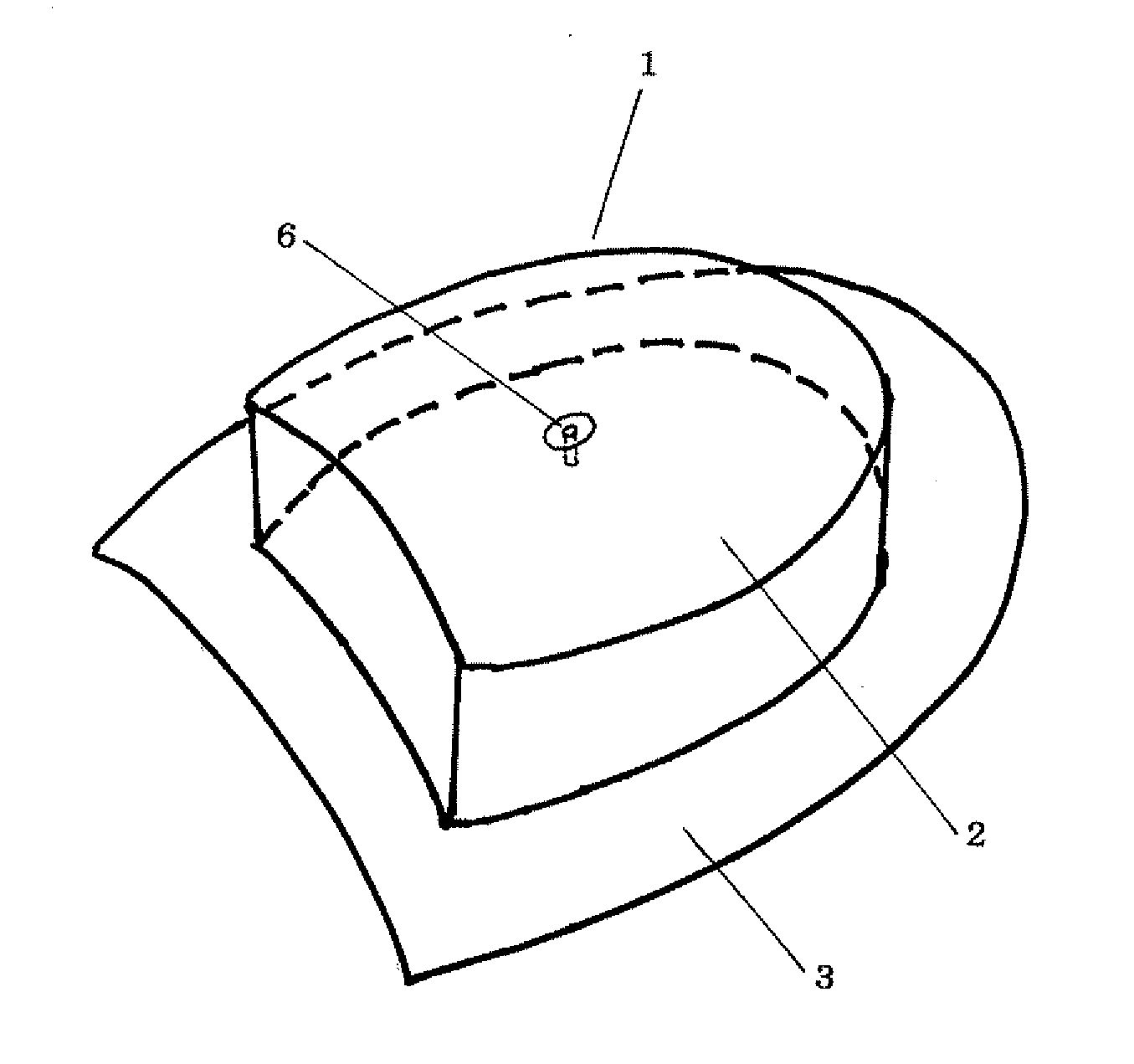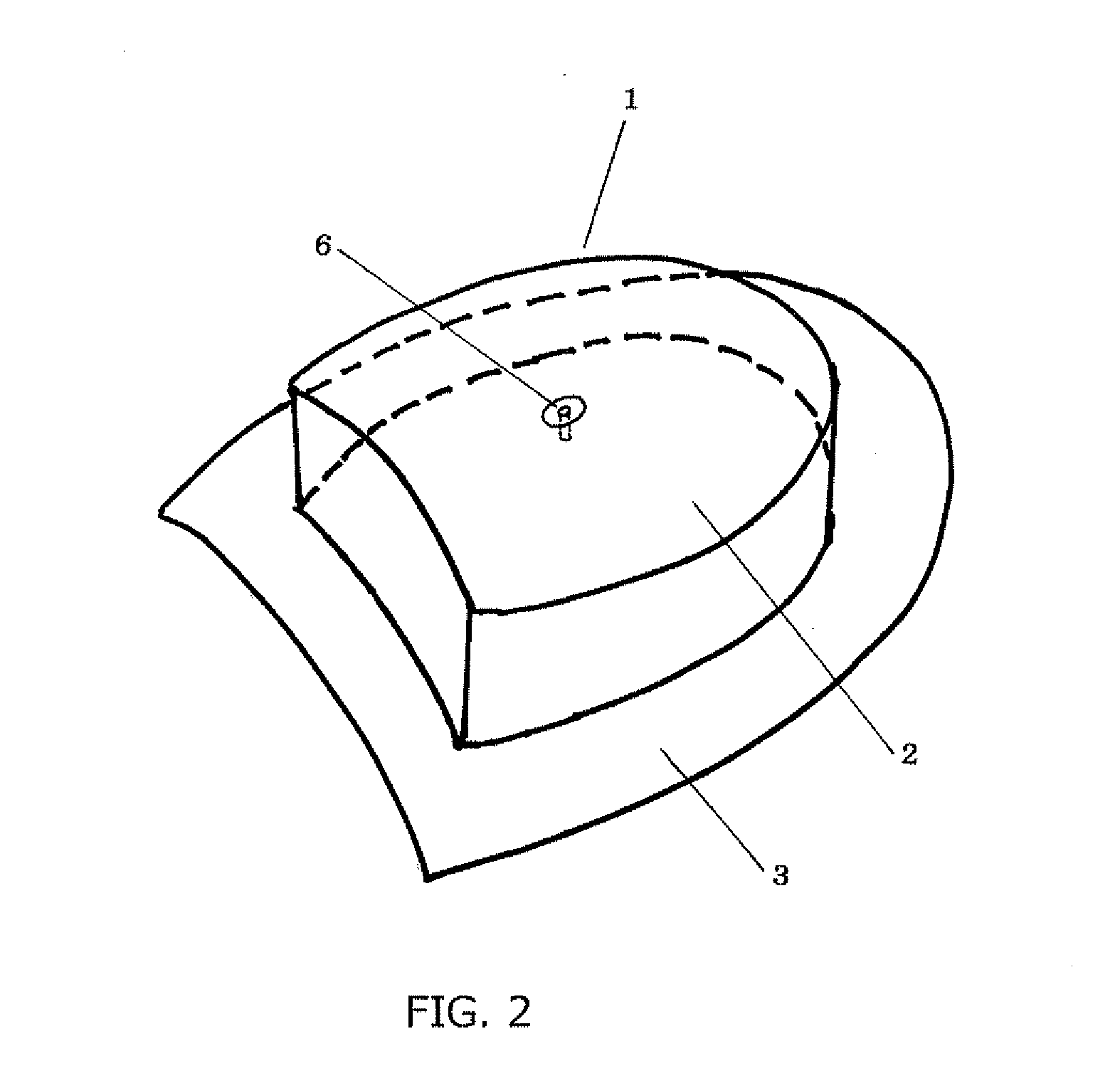Simple device for treating tinea unguium
a technology of a simple device and a nail is applied in the field of simple devices for treating tinea unguium, which can solve the problems of reducing the use range of a usable solvent, reducing the use range of a suitable solvent, and increasing the viscosity of the solvent, so as to prevent the deformation of the dome-shaped applicator, prevent separation, and penetrate the effect of a deep par
- Summary
- Abstract
- Description
- Claims
- Application Information
AI Technical Summary
Benefits of technology
Problems solved by technology
Method used
Image
Examples
example 1
[0074]The dome-shaped applicator of the first type as shown in FIG. 2 (inside volume: 0.15 mL) was used. A commercially available instantaneous adhesive agent (cyanoacrylate-based adhesive) was applied to the flange of the applicator for bonding. The flange was then hermetically bonded to a surface of a nail. Using a syringe (inside volume: 0.5 mL), 0.15 mL of a solution having a terbinafine hydrochloride content of 1% was injected through the feed port. The feed port was then opened so that the inside and outside of the applicator was in fluid communication with each other. Thus, the inside air was released and the inside of the dome-shaped applicator reached ambient pressure (1.0 atm.). The applicator was maintained as such for two days and then removed from the nail. A part of the tip of the nail was cut and measured for the concentration of the terbinafine hydrochloride. The measured terbinafine hydrochloride content in the nail is shown in Table for Comparison below.
example 2
[0075]The dome-shaped applicator of the second type as shown in FIG. 8 (inside volume: 0.15 mL) was used. A commercially available instantaneous adhesive agent (cyanoacrylate-based adhesive) was applied to the flange of the applicator for bonding. The flange was then hermetically bonded to a surface of a nail. Using a syringe (inside volume: 0.5 mL), 0.15 mL of a solution having a terbinafine hydrochloride content of 1% was injected through the thick film portion near the opening of the dome-shaped applicator.
[0076]Because the dome-shaped applicator was hermetically bonded to the nail, the thin film portion in the upper part thereof inflated. The inside pressure of the dome-shaped applicator was measured and found to be 1.3 atm, indicating that the pressure was increased by 0.3 atm from the ambient pressure. The dome-shaped applicator was maintained in the hermetically bonded state for two days and then removed from the nail. A part of the tip of the nail was cut and measured for th...
example 3
[0077]The dome-shaped applicator of the third type as shown in FIG. 15 (inside volume: 0.15 ml.) was used. A commercially available instantaneous adhesive agent (cyanoacrylate-based adhesive) was applied to the flange of the applicator for bonding. The flange was then hermetically bonded to a surface of a nail. Using a syringe (inside volume: 0.5 mL), 0.15 mL of a solution having a terbinafine hydrochloride content of 1% was injected through the thick film portion near the opening of the dome-shaped applicator. Because the dome-shaped applicator was hermetically bonded to the nail, the thin film portion in the upper part thereof was inverted and protruded as shown in FIG. 15(B). The inside pressure of the dome-shaped applicator was measured and found to be 1.3 atm, indicating that the pressure was increased by 0.3 atm from the ambient pressure.
[0078]The dome-shaped applicator was maintained in the hermetically bonded state for two days and then removed from the nail. A part of the t...
PUM
| Property | Measurement | Unit |
|---|---|---|
| thickness | aaaaa | aaaaa |
| thickness | aaaaa | aaaaa |
| thickness | aaaaa | aaaaa |
Abstract
Description
Claims
Application Information
 Login to View More
Login to View More - R&D
- Intellectual Property
- Life Sciences
- Materials
- Tech Scout
- Unparalleled Data Quality
- Higher Quality Content
- 60% Fewer Hallucinations
Browse by: Latest US Patents, China's latest patents, Technical Efficacy Thesaurus, Application Domain, Technology Topic, Popular Technical Reports.
© 2025 PatSnap. All rights reserved.Legal|Privacy policy|Modern Slavery Act Transparency Statement|Sitemap|About US| Contact US: help@patsnap.com



